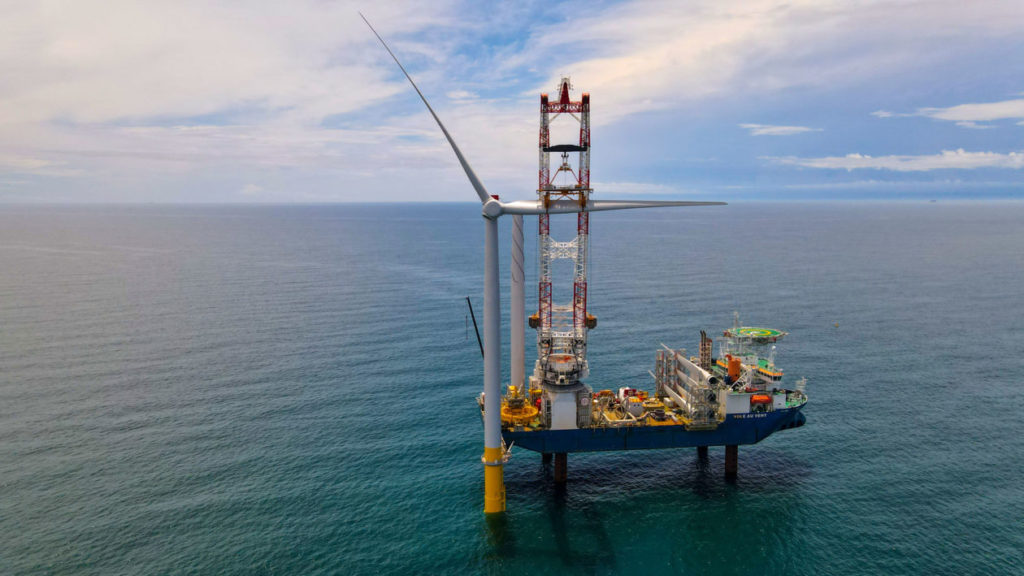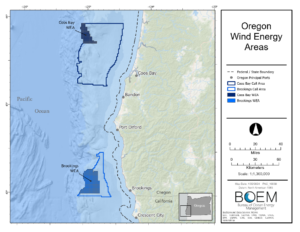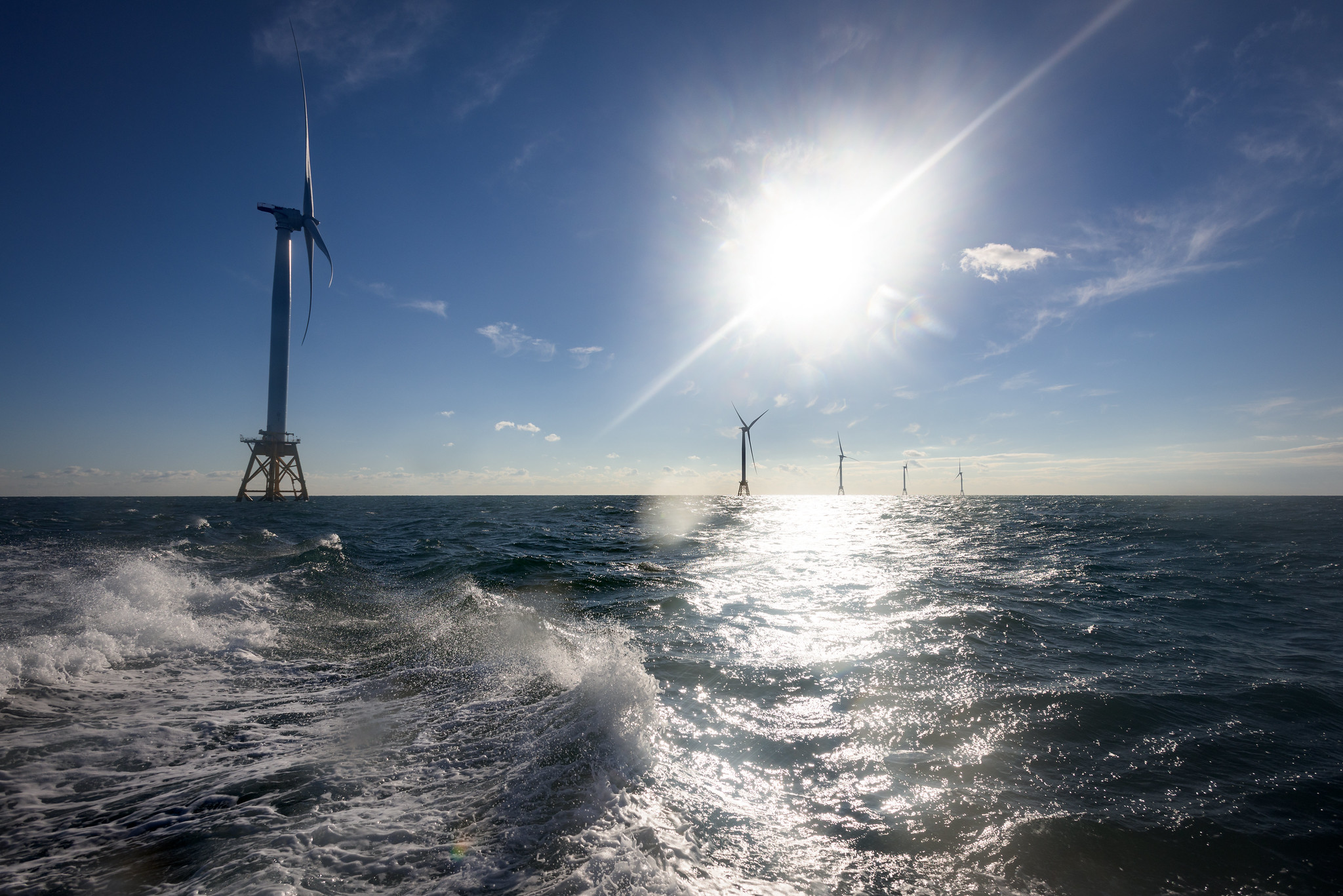
By ALEX BAUMHARDT/Oregon Capital Chronicle
Three West Coast universities located near future offshore wind energy sites are joining forces to undertake research and to help inform the public about the benefits and potential impacts of the new industry.
An auction expected to take place later this year for two wind energy sites off the southern Oregon coast has stirred both excitement about the potential for clean energy development and concern from nearby residents, tribes and the seafood industry amid a push by the Biden administration for the development of offshore wind energy.
The federal government has a goal of producing 30 gigawatts of offshore wind energy by 2030 and has called for the development of university “centers of excellence” to help drive that development.
The new Pacific Offshore Wind Consortium is made up of three university research centers in Oregon and California. The goal is to combine resources and expertise to garner more funding and to undertake more collaborative information sharing and research with state and federal agencies, tribes and towns on the West Coast.
“We can be that sort of trusted neutral third party to try and tell them what the state of the industry is, and to help create capacity in the community so they can negotiate, discuss, communicate, with some of these wind developers,” said Bryson Robertson, director of Oregon State’s Pacific Marine Energy Center, one of the three university research centers participating.
The other two participating institutions are the northern California Schatz Energy Research Center at Cal Poly Humboldt in Arcata and the Center for Coastal Marine Sciences at Cal Poly in San Luis Obispo. The two universities are the closest to five lease areas off the California coast that were auctioned off last year to international wind energy companies.
The two wind energy areas being auctioned off Oregon’s coast later this year are near Coos Bay and Brookings, and they could add up to 2.4 gigawatts of clean power to the grid – enough to power about 830,000 homes – with installations covering more than 195,000 acres in total. Each wind energy area identified is 20 to 30 miles offshore.
Concerns and opportunities

Seafood industry groups along with five Oregon and California tribes are opposed to the wind development plans off the coasts of both states. In November, the Tribal Council of the Confederated Tribes of the Coos, Lower Umpqua and Siuslaw Indians passed a resolution opposing offshore wind energy development, in part, they said, because federal officials had failed to engage them or respond to their concerns.
“There’s a lot of community-based concerns and questions out there, and there’s been a dearth of proper, data-driven knowledge and information dissemination to help people make decisions,” Robertson of Oregon State said.
“As Oregonians we should be looking at: How do we maximize the benefit of those lease sales if they’re going to happen? How do we make sure that they have stipulations that require union labor? Whether it has distinct community benefits written into it? There are a whole slew of opportunities where the state could apply or impose needs and requirements on a lease sale,” he said
The state is attempting to develop offshore wind energy standards via House Bill 4080, which was signed by Gov. Tina Kotek earlier this year. The law directs the Oregon Department of Energy to develop a roadmap for state policies on offshore wind energy development that include community input and labor guidelines.
Experts in the field
Each research center already has experts and conducts research in fields that can help foster better science-based discussions and decisions about offshore wind energy and its ecological impacts.
Oregon State experts, for example, have long studied and tested offshore wave energy infrastructure and have undertaken extensive research on the environmental, social, technical issues related to the offshore renewable energy industry. It is leading the development of a wave energy research and testing project just north of Waldport, for example.
The institutions started discussing collaboration last year after the U.S. Department of Energy called for more university-based research centers focused on the development of offshore wind energy. To date, the Biden administration has approved the development of eight offshore sites.
Between them, the three institutions have more than $12 million in funding for researching offshore energy generation and ecological impacts, and commitments for $1.6 million from private donors and the industry, according to a news release. They’re hoping to get at least $4 million more from the U.S. Department of Energy as a center of excellence.
The consortium is overseen by an advisory committee that includes leaders from two tribes – Blue Lake Rancheria and the Yurok Tribe – as well as state agencies, including the Oregon Department of Land Conservation and Development, the Oregon Department of Energy, the Pacific Northwest National Laboratory and Oregon Sea Grant – a partnership between Oregon State University and the National Oceanic and Atmospheric Administration.
- Oregon Capital Chronicle is a nonprofit Salem-based news service that focuses its reporting on Oregon state government, politics and policy.
Community meetings
Oregon’s Land Conservation and Development agency is hosting a series of community meetings along the coast to share information and hear comments on a proposal by the Bureau of Ocean Energy Management to lease areas of the ocean off Oregon’s coast to explore possibilities for wind energy development. The proposed leases would authorize companies to study the areas off Oregon’s coast for potential offshore wind energy development projects.
The meetings consist of an open house at 5:30 p.m., a presentation at 6 p.m. and public comments from 6:30-8 p.m. Days and locations are:
- Monday, June 3: Brookings-Harbor High School, Brookings;
- Tuesday, June 4: Sunset Middle School, Coos Bay;
- Thursday, June 6: Siuslaw Middle School, Florence; and
- Friday, June 7: Newport High School, Newport.

